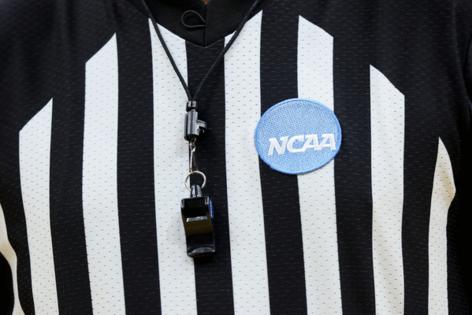Luke DeCock: Will NCAA's new coach's challenge help get games back under two hours?
Published in Basketball
CHARLOTTE, N.C. — No matter how much you may love college basketball, and around here that can be a considerable amount, there is such a thing as too much of it.
Not games or rivalries or dunks or buzzer-beaters. Bring those on.
But no one needs basketball games that cruise past two hours and into the next broadcast window over and over again. Late last season, statistician Ken Pomeroy’s data indicated that the average game had gone from just under two hours to over 2:05 in the space of five years.
That may not seem like a lot, but over the course of a season six or seven minutes per game adds up to countless hours of time lost as — and this is unquestionably the culprit — officials stare at the replay monitor trying to adjudicate a few seconds of clock time or whether a toe was on the 3-point line. Or, worse, which tip amid a mess of fingers a ball last touched on its way into the band.
So many of these pedantic reviews, especially on those impossible out-of-bounds calls, sucked the life out of the late-game drama that makes college basketball so exciting. The signature moment of NCAA Tournament games sometimes felt like it was less often a game-winning 3-pointer than three dudes staring at a TV.
“My opinion, I think the national opinion, officials went to the monitor too many times at the end of the game,” ACC supervisor of officials Bryan Kersey said Wednesday. “I know we wanted to make sure we got everything correct. But I would say we probably didn’t overturn 10 percent of the calls that we went to look at. And sometimes I think we used it as a crutch.”
The NCAA finally acknowledged this over the summer by adding an NBA-style coach’s challenge on out-of-bounds plays, goaltending and block/charge plays under the rim. Officials can still review goaltending and block/charge calls of their own volition in the final two minutes, and there are still way too many other occasions in which officials can wander over to the monitor long enough for a cup of coffee and a cigarette, but in theory the challenge will force coaches to pick which of those plays are worth reviewing rather than slogging out all of them — and restore the late-game drama everyone wants.
“I think it has a real chance to facilitate that,” ACC basketball czar Paul Brazeau said. “And hopefully, make these ends of games faster. That’s where it gets tedious. And officials want to get it right so I don’t ever fault them for going to replay. But as much or more than the measured length of time, I think you want to see the game flow at the end.”
It will benefit officials, too. They don’t necessarily want to be at the monitor every 45 seconds, but they’re under tremendous pressure, not only from players and coaches but from every unofficial supervisor with a DVR and a social-media account, to get every single call right, even if that means flipping back and forth between freeze-frames for four minutes. A game with flow is an easier game to officiate.
And if it’s new for referees ... imagine the learning curve for coaches with the new challenge system.
“I’ve got to study that harder,” Wake Forest’s Steve Forbes said. “I was just in (Indianapolis) for these meetings and the referees are in there with us, going over it, talking about it. I think there’s probably a strategy to it as far as when you do it, how you do it. But you’ve still got to have a timeout, too.”
There’s also an emphasis on reducing time-wasting while inbounding and before free throws, and adopting an NBA-style interpretation of continuation on shooting fouls nationally will help things flow as well.
“It’s pretty much how we have officiated it the last nine years that I’ve been here (at the ACC),” Kersey said. “It’s more or less to get the entire country on the same page. I don’t think we’ve ever really addressed this. If our teams go out West to play or Midwest to play, it might be that they cancel out. We’re trying to stop the referees from waving (baskets) off.”
There will still be time spent and occasionally wasted at the monitor, over timing issues and shot-clock violations and scoring decisions and the like, but hopefully moving many of the typically reviewed plays under the rubric of the challenge — and typically the plays that take the longest to retroactively adjudicate — will get the average college basketball game to not feel so long, whether it’s under two hours or not.
“I think as we improve flow game times will come down,” Kersey said. “I don’t look at how long games last. I looked at the end of games last year and we have a lot of footage of five times at the monitor looking at something in 38 seconds. I think this takes that out of it.”
If things do get back under two hours, ESPN and Fox will probably just pad out commercial breaks anyway, but take progress where you can find it. And after years of replay-review-induced bloating, there’s at least hope that games will end the way they always once did. And still should.
©2025 Raleigh News & Observer. Visit newsobserver.com. Distributed by Tribune Content Agency, LLC.







Comments